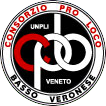GEOGRAPHY
Bovolone, with its surface of 41.27 km², is located at an average altitude of 24 m above sea level. It is 22 km south of Verona. It is situated between the middle and the lower Veronese Valley, where the dry northern plains meet the wet lands of the south. The river Menago flows through the town, from north to south, and in its basin there is a protected area called Valle del Menago.
Its fraction is Villafontana which borders the municipalities of Cerea, Concamarise, Isola della Scala, Isola Rizza, Oppeano, Salizzole, San Piero di Morubio.
ETYMOLOGY
The name Bodoloni originally appeared in a document of property from 1813 and according to popular tradition “Bovolone” comes from the Latin “Bodolonus”, meaning “Land of the frogs” (“rana bodoli” was the name for tadpoles). Conversely, historian and linguist Giovanni Rapelli suggests that the name of the town is Longobardic and comes from the word “Bodilo”, meaning “land of Bodilo”. Others believe that the origin of the name is to be found in the word Bodos, that is related to clay and the furnaces once situated around Creari.
HISTORY
The origin of Bovolone dates back to 2500 B.C., around the end of the Stone Age and the beginning of the Bronze Age, as proven by the remains of the stilt house villages found in the valleys. Archaeological digs in 1876 brought a large necropolis to light, along with urns, graves and significant evidence of former dwellings. The first settlements developed around the Roman Pagus (the smallest administrative district) around “Prato Castello”, where the Parish of San Fermo and Rustico would later be built, today moved to the area of the historical centre. After the fall of the Roman Empire and the Barbarian Invasions, came the Longobards who were to be driven off by Carlo Magno in 778. The king turned their former dukedoms into shires and awarded them to his sworn lords. Bovolone and its surroundings were an episcopal fief for about a millennium, according to a document dated 24 June 813 that certified Verona’s bishop Ratoldo as the owner of those lands. This fief and the privileges of its owner, such as the administration of goods and justice, was repeatedly recognized in the following centuries by popes, emperors, Scaligeri and Venetians. After the coming of Napoleon’s army in northern Italy, however, around the end of the eighteenth century, the bishop was stripped of his rights on this land. Only the Bishop Palace remains, of the ancient castle it once was, which has been recently restored and is now employed as a municipal building.
ART
The parish of San Giovanni Decollato, whose first evidence dates back to the year 1000, was the ancient Church of Bovolone, partially turned into a rural dwelling later on. Inside the Romanesque church there is an original fresco and next to it a bell tower from the 1500s and an octagonal baptistery adorned with frescos from the 1700s. The frescos in the Parish of San Fermo and Rustico are probably in Byzantine fashion and were painted in the 1100s or the 1200s; these, along with the Romanesque bell tower, are what remains of the medieval oratory, upon which the church was built, radically restored in the 1700s. Inside it there are a Pietà in stone from the 1400s, some paintings by Nicolò golfino, Paolo Farinati and Felice Riccio (known as Brusasorci) from the 1500s, and paintings from the 1700s by Bettino Cignaroli and Battista Marcola. The frescos on the ceiling are by Antonio Raggi. The early structure of the Bishop’s palace was once the “Casa Merlata” (Castellated house) described by an ecclesiastic notary in 1279, but more reliable information dates back to the 1500s, when the building was the administrative centre of the fief. The adjacent farm building and the underlying cellars were the only architectural elements to survive the restoration of the 1700s. The former summer residence of the Bishop today hosts the municipal hall. The houses in corte San Pietro date back to the 1300s and so does the church in contrada San Pierino, probably built with Roman material re-used from the Oratory of San Biagio. The small church “del Bosco” was built in the 1400s, The sanctuary “della Beata Vergine della Cintura” also known as Madonna del Mulinello, dates back to 1560. The works on the new Parish of San Giuseppe began in 1844 and were completed in 1946, later in the same century Villa Gagliardi and the Chapel della Madonna della Salute in contrada Pozza were built, decorated in 1924 by Agostino Pegrassi and Pietro Negrini.
ECONOMY
Bovolone is a benchmark in the production of stylish classical furniture and the restoration of ancient home furnishings, leading both the national and international market thanks to the high quality of its products and its great competitivity. Artisans also produce wrought iron, glass and clothing. Its agriculture thrives upon the flourishing cultivation of tobacco, rice and vegetables. Livestock and fish farming are also widespread. There are also food industries producing sweets and pickled foods.
